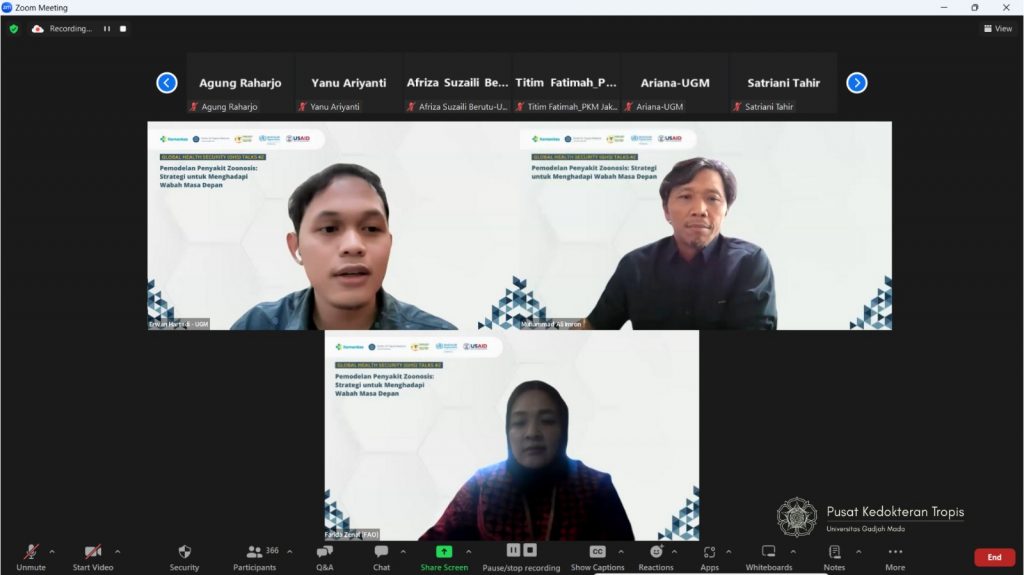Zoonotic Disease Control: New Era of Collaboration and Data-Driven Solutions
Zoonotic diseases—those that spread from animals to humans—are more common than you might think. But do you know how they can impact our health? With environmental changes and human activity on the rise, these diseases, like leptospirosis, are becoming more of a threat.
The good news is, experts are working on multiple solutions, including public health education, with discussions like these being a crucial step. On August 29th, nearly 500 participants joined Global Health Security (GHS) Talks #2 that explored how disease modeling can help us better understand and control many zoonotic diseases. Held by Center for Tropical Medicine Universitas Gadjah Mada in collaboration with the Ministry of Health Indonesia, WHO Indonesia, and USAID Indonesia.

Opening this webinar, drh. Farida C. Zenal, M.Sc., the Country National Veterinary Advisor for FAO ECTAD Indonesia. She explained the current global and Indonesian situation regarding zoonotic diseases. While there are systems in place for reporting diseases in humans, animals, and wildlife, Drh. Farida emphasized that these systems need to be significantly improved. She introduced EMPRES-i, a global platform that monitors and provides early warnings for disease spread. Additionally, she mentioned the GLEWS+ platform, created by FAO in collaboration with WOAH and WHO, to enhance communication between partners about existing and future disease threats.
Following that presentation, we have Dr. rer. silv. Muhammad Ali Imron, M.Sc, a Lecturer at Universitas Gadjah Mada and Program Director at WWF Indonesia. He explained that Agent Based Modelling’s bottom-up approach models disease spread by considering individual characteristics and interactions. While widely used abroad, ABM is still underutilized in Indonesia. Dr. Imron belief, its potential to advance scientific research and develop effective health strategies, suggesting it could enhance epidemic management through better collaboration between modelers and health scientists.
Discussion session wrapped up the webinar, participants and the speakers discussed how we can improve disease modeling and reporting. Both speakers agree that accurate data and collaboration among health professionals, scientists, and policymakers are essential to safeguarding public health. drh. Farida emphasized the need for accurate disease models, which can only be effective if supported by structured data and clear communication among all involved parties. Adding to that, Dr. Imron said that there are many different models available, and the key is to choose the right one based on the specific characteristics of each disease.

